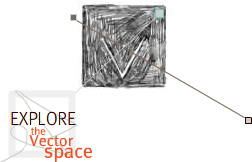WiFi.Bedouin
This is not the web without wires..
Design by Erik Loyer
Editor's Introduction
In his 1964 book Understanding Media, Marshall McLuhan invokes the image of a Bedouin wandering the remotest deserts by camel, dazzling the natives with media broadcasts from a battery-powered radio. McLuhan compares the wonderment of the native with the occultation of everyday technologies among urban dwellers who, despite being immersed in a media-rich environment, are no less in need of developing their own technological "literacy." With Julian Bleecker's Wifi.Bedouin, the concept of inserting wireless signals into unexpected places ”" and thereby suggesting new ways of thinking about the world ”" has been updated for the 21st century. The result is a compelling revision of the dominant logic of mobile and pervasive media, emphasizing locality over ubiquity and promoting awareness of the limits of even the most fetishized new technologies.
At the risk of suggesting that, to some extent, the medium of the Wifi.Bedouin provides its own message, Bleecker's device is perhaps best understood as a cognitive tool, a means of creating conceptual and technical possibilities rather than a discrete object unto itself. The Bedouin also merges the ordinarily disparate worlds of the tinkerer-hacker-slasher with that of the academic or cultural investigator. In fact, the Wifi.Bedouin breaks no new technological ground, relying instead on several relatively common digital components that are ingeniously assembled into a self-contained, mobile package. More adventurous users are invited to try their hand at assembling a Bedouin themselves by following the step-by-step instructions in the Wifi.Bedouin DIY guide. For the less technically inclined, Vectors is soliciting project proposals for an ongoing series of field tests in order to explore the possibilities and limitations of both wireless technology and the cultural imaginary it has activated.



